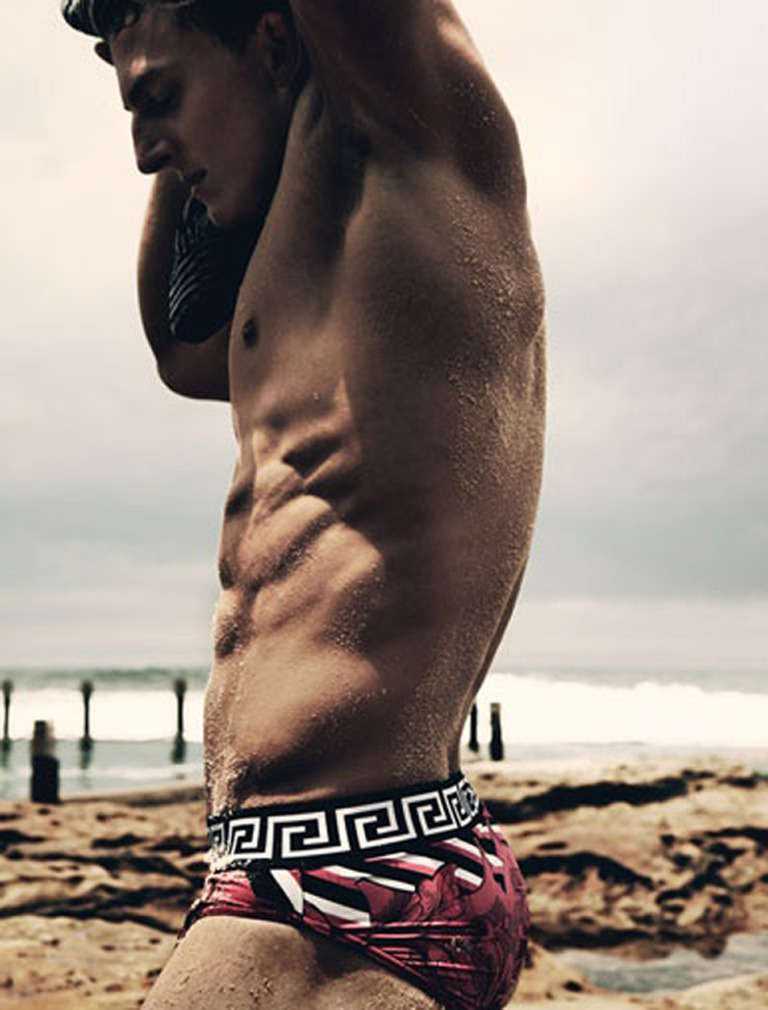The Brits have funny
teeth, the French have berets and baguettes, and the Dutch have their
penchant for short-sleeved shirts and pulled-up white socks.
Every
nation comes with its own lazy stereotypes attached, but for one
country, the cliches aren't all that bad. Virile and invariably
well-dressed, Italian men are probably the most stylish bunch out there
(sorry, Spain). Here, fresh from Pitti Uomo in Florence and men's
fashion week in Milan, we dissect the 12 key style lessons we can learn
from our natty cousins across the Atlantic.
1 | It's possible to look good in a vest
The
mistake most men make when sporting a padded vest is to think of it as
an outer layer. The trick, as the Italians understand, is to treat it as
an inner sheath—an insulating layer worn over your shirt and beneath
your jacket. Opt for something close-cut in a neutral shade, choose a
matte fabric (never, ever "North Face-shiny"), and team with an
open-neck white shirt, a deconstructed Brunello Cucinelli blazer, and a
pair of slim-cut washed jeans for a relaxed, long-weekend-in-Rome look.
2 | Never take off your sunglasses. Ever.
If
there's one thing the Italians know, it's that everyone looks better in
a pair of sunglasses, even when it's raining... or when it's dark.
Follow their lead and never take yours off—just make sure you find the
right pair for your face. If you've got a round jaw, opt for a square or
rectangular frame. Square jaw? Round frame. Unsure about the dimensons
of your face? Choose an aviator. An aviator suits everyone, as the
Italians well know.
3 | Investing in high quality clothing will always pay dividends.
No
country boasts a higher proportion of well-dressed billionaires than
Italy. Just look at Patrizio Bertelli of Prada, Giorgio Armani, or Diego
Della Valle of Tod's. All of them are incredibly
wealthy and all extraordinarily stylish. Dress like these men and you'll
be on your way to your first million in no time. Promise.
4 | An espresso and a cigarette is the only way to breakfast.
How
do you think Italian men manage to fit into their size 36 suits and
super-slim jeans? (And how do you reckon they look so good in street
style shots?) It's all about an espresso and a smoke first thing in the
morning.
5 | Texture is key.
If
there's one thing that Italian men understand, it's that details
matter. Instead of wearing a matte poplin shirt with a flat mohair suit,
a stylish Italian will play with texture and wear a soft cotton jersey
shirt with a deconstructed houndstooth cashmere blazer and a boiled wool
overcoat. Contrast in texture is the key to a successful outfit.
6 | Sprezzatura is the only Italian you need to know.
In addition to ciao, and maybe pronto (mainly because it sounds cool), the most important Italian word you should have in your vocabulary is sprezzatura.
Translating to "studied carelessness," the term perfectly encapsulates
the stylish Italian man's way of dressing. Your clothes should look as
if they've been thrown on without a thought (even if you've spent four
hours in front of the mirror deciding which trouser length works best
with your loafers). Just remember: looking effortless is a balancing
act. If you're verging on peacockery, you're doing it wrong.
7 | Men can also wear color.
Visit
any major city in Italy and you'll notice that the men wear as much
color as the women. The key is to choose washed-out, soft shades.
A dusty pink sweater with a soft blue blazer and cream chinos, for
instance; or a brighter blue suit with a white shirt and indigo
overcoat. Pick one slightly bolder shade and team with more traditional
colors to keep things from getting out of hand.
8 | Embrace your hair while you've got it.
More
often than not blessed with thick waves of dark, coarse hair, Italian
men know better than to clip it all off before its time. Make like
them and embrace your hair while you've still got it—the likelihood is
it won't be around forever.
9 | Structure isn't everything.
Though
the Savile Row tradition of super-structured tailoring still has its
place, the Italian look—softer and more closely cut to the body—has
never felt more relevant. The masters of Italian tailoring—see Giorgio
Armani, Brunello Cucinelli, Kiton, Corneliani, and Ermenegildo Zegna—all
embrace a softer cut, and so too should you. Opt for a suit with a
deconstucted shoulder, a half-lining (or no lining at all), and a
tapered trouser.
10 | Layering is your friend.
Just
as texture is important, so too is creating a sense of depth with
clever layering. Italian men won't think twice about wearing a classic
shirt beneath a knitted overshirt, beneath a vest, beneath a blazer,
beneath an overcoat—and neither should you.
11 | Don't think of your swim trunks as underwear.
Perhaps
its because we don't see the sun as often as our Italian counterparts,
but we tend not to take care of our swimwear. If you think of your
trunks in the same way as you do your boxer shorts (a boring everyday
essential which no one is ever likely to see), you're going to look
terrible on the beach. Instead, do as the Romans (and Florentines, and
Neapolitans) do, and treat your swimming trunks with as much care as you
would your suit. Your fellow sunbathers will thank you.
12 | Embrace the power of a perfect pose.
Look
at any street style shot from Florence or Milan and you'll notice that
not only are Italian men immaculately dressed, they also have posing
down pat. The imperceptible turn of a foot, the artfully placed hand on a
knee—never have an entire people been so ready for their close up.














